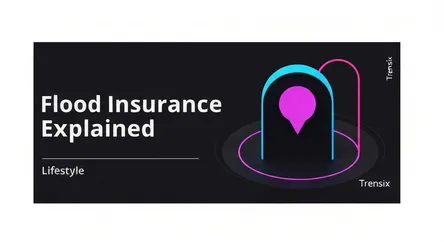Lifestyle
Flood Insurance Explained

Discover what flood insurance is, why it's vital for homeowners, and how it differs from standard policies. Protect your property from flood damage.
What is it?
Flood insurance is a specific type of property insurance that covers a dwelling for losses sustained by water damage, specifically from flooding. Unlike standard homeowners' or renters' insurance, flood damage is typically excluded, making this separate policy necessary for protection. In the United States, it is primarily managed by the National Flood Insurance Program (NFIP), which is administered by FEMA. This insurance covers both the structure of the home and the personal belongings inside, providing a financial safety net against one of nature's most common and costly disasters.
Why is it trending?
Awareness of flood insurance is rising due to increased frequency and intensity of extreme weather events linked to climate change. As hurricanes, heavy rainfall, and storm surges become more common, areas previously considered low-risk are now experiencing unprecedented flooding. Updated FEMA flood maps are re-categorizing many properties into higher-risk zones, prompting mortgage lenders to require flood insurance. This growing risk factor has made homeowners more proactive about securing coverage, even when it's not mandatory.
How does it affect people?
For homeowners, flood insurance provides critical financial protection. Without it, residents face paying for devastating repairs out of pocket, which can lead to financial ruin. For those in designated high-risk flood zones with a federally-backed mortgage, it is a mandatory expense. For others, it's a vital tool for peace of mind and risk management. A policy can mean the difference between rebuilding after a disaster and facing total financial loss, ensuring families can recover and restore their homes and lives.